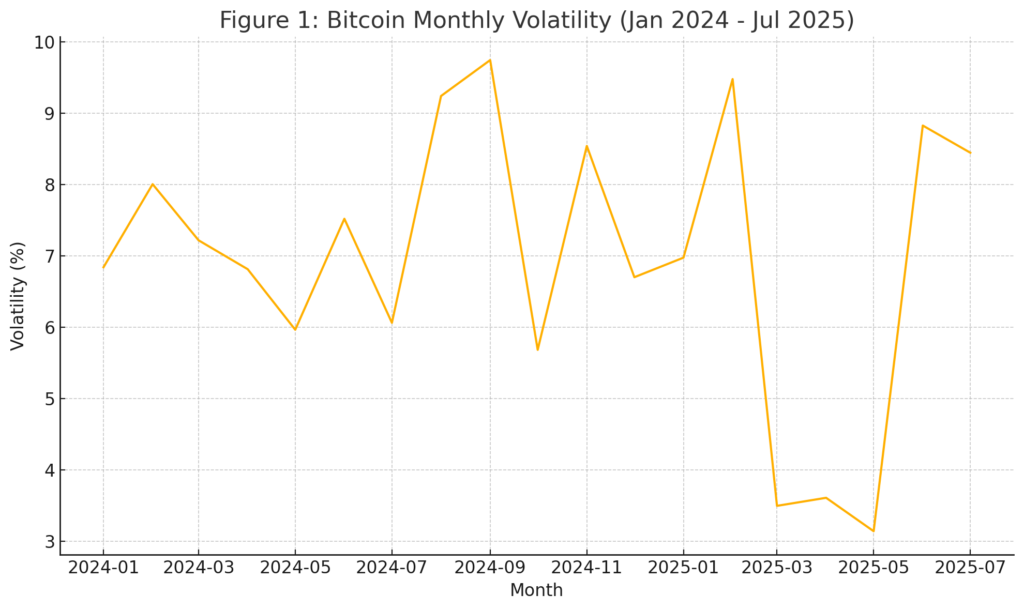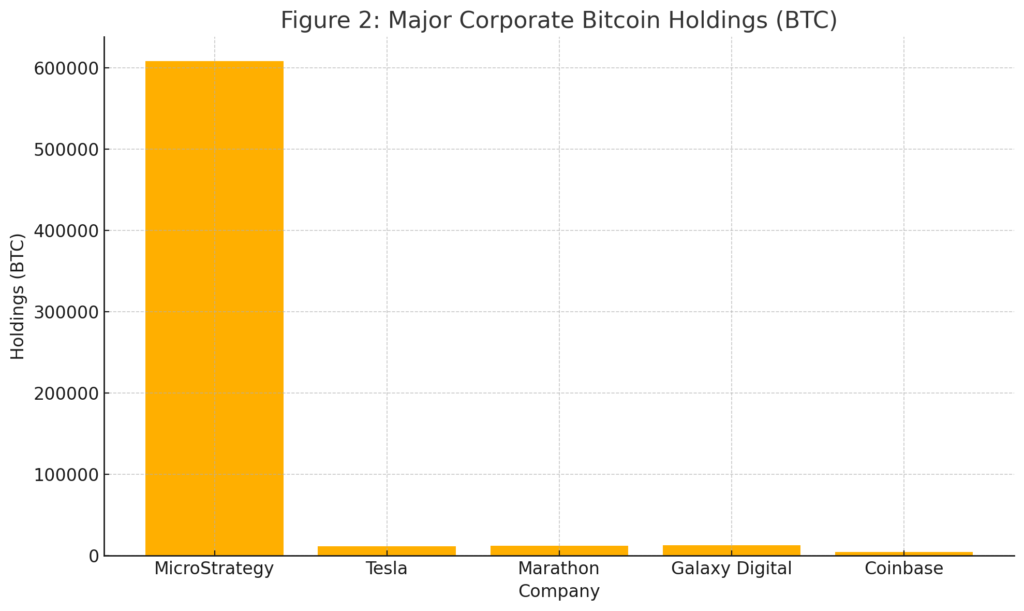
Main Points:
- Surge in corporate Bitcoin holdings among public companies
- Record accumulation: over 35 firms now hold more than 1,000 BTC
- Market valuation of corporate BTC treasuries tops $71.8 billion
- Volatility challenges and opportunity costs from early sales
- Strategic considerations: inflation hedging, investor relations, regulatory compliance
1. The New Frontier in Corporate Finance: Evaluating Bitcoin Holdings and Volatility
Over the past year, a growing number of publicly traded companies have moved Bitcoin from the fringes of “alternative assets” to core treasury holdings. As of July 24, 2025, MicroStrategy alone holds 607,770 BTC—valued at approximately $40.4 billion at an average purchase price of $66,384.56 per coin. By July 27, 2025, the market value of these holdings soared to $71.8 billion, reflecting a 64.58% unrealized gain of $28.17 billion.
Bitcoin’s high volatility, however, poses both upside and downside risks. Monthly price swings have ranged between 3% and 10% over the past 18 months, underscoring the need for dynamic risk management when allocating treasury reserves to BTC.
Insert Figure 1 here: Bitcoin Monthly Volatility Chart

2. Beyond High‑Risk, High‑Return: Strategic Asset Allocation and Opportunity Costs
Bitcoin’s reputation as a “high‑risk, high‑return” asset has evolved. Companies no longer view BTC merely as speculative; many see it as a strategic hedge against inflation and a diversification tool. In Q2 2025, institutional Bitcoin purchases jumped 35% quarter‑on‑quarter—from 99,857 BTC in Q1 to 134,456 BTC in Q2—driven by new market entrants and repeat buyers.
Yet early moves can carry steep opportunity costs. Tesla sold approximately 75% of its BTC holdings in 2022 for roughly $936 million—only to miss out on over $3.5 billion in gains as prices rallied. Today, Tesla retains roughly 10,500–11,500 BTC, now valued at $1.24 billion amid the latest rally. These examples illustrate the trade‑offs between locking in profits and riding further appreciation.
3. Lessons for Japanese Firms: Implementation Challenges and Opportunities
Japanese corporations can draw several lessons:
- Inflation Hedging & Diversification
Amid global inflation pressures, BTC’s capped supply makes it an attractive alternative to cash, especially as Japan’s long-standing low‑interest environment erodes fiat returns. - Volatility Management
Establish clear risk‑tolerance thresholds and stop‑loss policies. Treasury teams should simulate stress scenarios to assess potential balance‑sheet swings under extreme BTC volatility. - Regulatory & Accounting Frameworks
While Japan’s crypto regulations have matured, concrete guidelines on large‑scale corporate BTC accounting and tax treatment remain under development. Collaboration with auditors and tax advisors is essential to ensure transparent reporting and compliance. - Investor Relations & Branding
BTC adoption can signal innovation but may unsettle risk‑averse stakeholders. Proactive disclosure of strategy, risk controls, and market outlook can foster investor confidence.
Insert Figure 2 here: Major Corporate Bitcoin Holdings Bar Chart

Conclusion
Corporate Bitcoin treasuries mark a paradigm shift in how firms approach asset management. The rapid accumulation—surpassing $71.8 billion among leading companies—and bullish price forecasts (including $1 million targets from Cantor Fitzgerald analysts) highlight growing institutional conviction バロンズ. Yet Bitcoin’s inherent volatility demands rigorous governance, clear strategic objectives, and robust risk controls.
For Japanese companies, integrating BTC into treasury operations offers diversification and inflation hedging but also navigational challenges across accounting, tax, and stakeholder communications. By learning from pioneers like MicroStrategy and Tesla—and by tailoring strategies to corporate risk appetite and regulatory landscapes—Japanese firms can chart a prudent path toward leveraging Bitcoin’s unique value proposition. Continuous monitoring of market trends, coupled with transparent disclosure, will be vital in balancing the dual imperatives of opportunity and risk.

